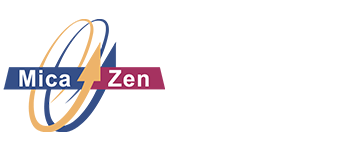It has been requested that I expand on the 5S steps. Therefore, I will be posting an article on each one of the 5S steps over the coming weeks.
The first step in 5S is SORT. This is to have you focus on eliminating any
and all unnecessary items from the workplace.
To SORT means exactly what is states. Go through everything in the workplace and keep ONLY what is truly necessary on a DAILY basis. This includes materials, tools, equipment, and supplies. Note: when SORTING keep in mind that this should be done throughout the ENTIRE workplace (From the Front Office all the way through the back of the shop)
The first step when sorting through a work area or zone is to identify and divide all items in the specific workplace into three categories:
1. Items used daily.
2. Items used often / sometimes.
3. Items that you no longer use/need.
This sorting process will do several things for your business. It will give you additional space, it will help keep your workplace tidy and safe, plus when things are easier to find; the production will increase.
All of the items in group 1
you will need to clean up and put somewhere handy and within easy access (we will get into the specifics in some of the other 5S Steps) When considering all of the items in group 1 keep in mind everything that is needed on a daily basis including tools, supplies and potentially even the quantity of supplies needed in a specific area.
All of the items in Group 2
you should move to a separate, common storage area (we will get into the specifics in some of the other 5S Steps) * If you feel that you have identified too many items in Group 2, you may want to catalog all of the items in the common storage area and tag them in order to track how often they are truly used and if they actually need to be kept in this group.
All of the items in Group 3
you should either A. discard them immediately (if they are damaged, outdated or obsolete) or B. move to a storage area (possibly outside in a trailer or somewhere NOT easy to access) If these items are not used in the next 30-90 days; then they are definitely not needed and should be discarded. * Many people use RED Tags for these items and catalog them with the Date, location of where they are stored, and a reason why these items have been tagged.
PLEASE try NOT to just keep things because you “may” need them someday. Too many organizations/people fall into this trap. It’s called hoarding and trust me when I say that it won’t help you long term.
Also, be careful that you don’t fall into the trap of specifically focusing on one area or another. In order to truly enjoy the benefits of a LEAN (more efficient and less wasteful environment); the principles of 5S need to flow through the ENTIRE organization It is easier to sort through each work individually rather than trying to tackle the entire organization at one time; however, until ALL work zones have been completed. The process has not been finished.
Finally, it is very important to understand that 5S is not a “once in a lifetime” process. As items become updated, other items will become obsolete. Each workstation should be monitored and re-evaluated on a MONTHLY basis to make sure that the correct daily tools, supplies, etc. are available in each workstation.

